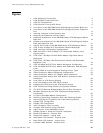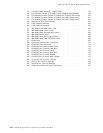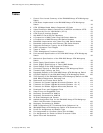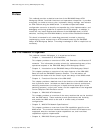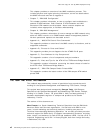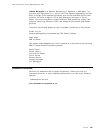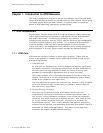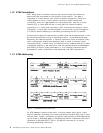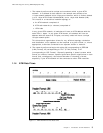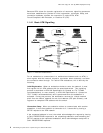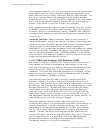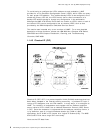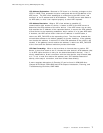
This soft copy for use by IBM employees only.
Chapter 1. Introduction to ATM Networks
This book is designed to help you to get the most effective use of the IBM 8285
Nways ATM Workgroup Switch as you implement an ATM network. Before going
into further details about the 8285, however, it might be useful to review the
basics of ATM networking, addressing, and data flows.
1.1 ATM Fundamentals
Asynchronous Transfer Mode (ATM) is a high-performance network technology
that is rapidly becoming the standard for high-speed LAN and WAN networks,
both public and private. It combines the flexibility and resiliency of
connection-less protocols, such as TCP/IP, with the efficiency and manageability
of session-oriented protocols, such as SNA. This is because ATM uses small,
fixed-size packets called
cells
which are transported across the network
hop-by-hop along a pre-determined
virtual path
that can be quickly changed to
avoid congestion or failures. Both of these concepts are discussed below.
1.1.1 ATM Cells
ATM uses the concept of cells as its basic delivery vehicle. These cells are
similar to the packets (or frames) used in traditional networks, except for two
distinguishing features:
1. Fixed Cell Size
All ATM cells are 53-bytes long, of which 48 bytes are payload, and 5 bytes
are header information. This payload-size provides the best combination of
efficiency (favoring large payloads for data) and latency (favoring small
payloads for time-sensitive applications such as voice and video).
The header contains all the information necessary for the cell to enter the
network, to be carried to its next (intermediate) destination, and to identify
simple errors (single-bit) that might occur.
The most important thing about the fixed cell size, however, is that it enables
cells to be switched simply and efficiently, in hardware, without costly (in
time and money) large buffers.
2. Minimal Routing Information
ATM cells are connection-oriented, which means that they are not
responsible for identifying a destination or determining the best route. In
fact, the only routing information necessary is the current hop information
(which the next switch uses in its forwarding decision). And, since all cells
for a given session follow the same path, no provision is necessary for
out-of-sequence arrival. Thus, unlike traditional LAN packets, sequencing
numbers are not required, and addressing at the MAC and network layers is
eliminated (for native ATM applications). The result is more data, less
overhead, and simpler hardware-based switching
Copyright IBM Corp. 1996 1



